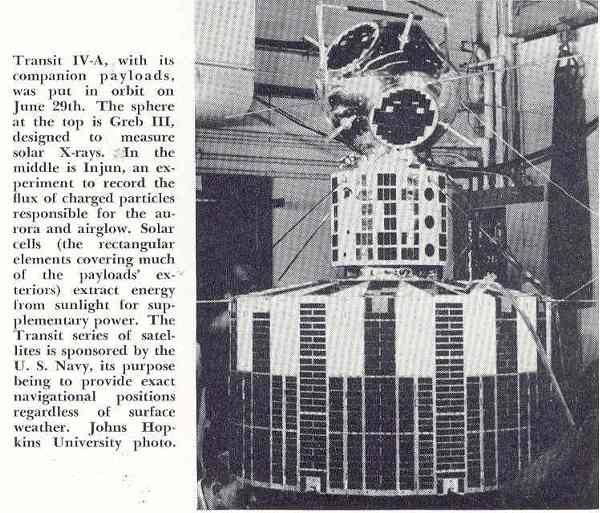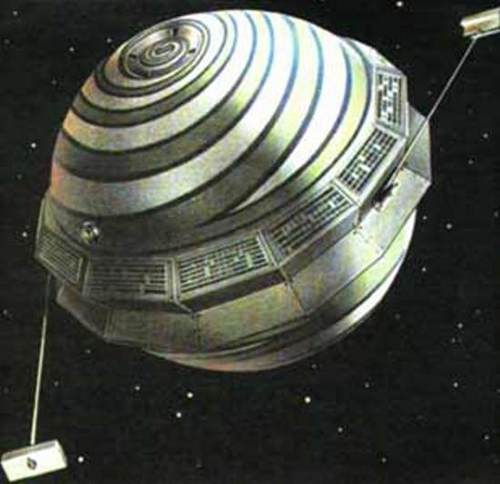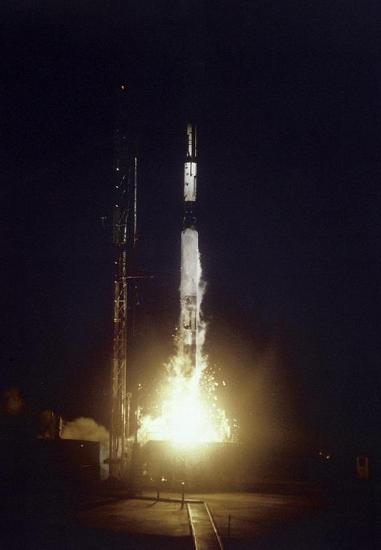
by Gideon Marcus
One Step

Humanity took its first halting steps toward the Moon with the (mostly) successful launch of the first Apollo spacecraft into orbit on May 28, 1964. Blasting off from Cape Kennedy's Pad 37B, the sixth Saturn I, biggest rocket in existence, carried a boilerplate, non-functional spacecraft.
The mission marked firsts in several ways. Whereas the previous five Saturns had been topped with Jupiter-C nosecones, SA-6 was the first to prove the actual Apollo structure. Less auspiciously, the flight also marked the first malfunction of the Saturn rocket: 122 seconds into its mission, 24 seconds before planned cut-off, engine #8 prematurely shut down.
But out of the jaws of failure came ultimate success. The other engines continued to fire an additional two seconds, the four inboards shutting down shutting off 142 seconds into flight, the remaining three outboards going dark at Launch + 148. Despite these compensations, AS-101 (the name for the spacecraft) was still flying "low and slow"; the second stage then ignited and compensated for the balky first stage, ultimately delivering the Apollo spacecraft almost perfectly into its planned orbit.

That's Wernher von Braun in the middle; next to him, with the glasses, is George Mueller, who used to run the Pioneer lunar project at STL
Thus, the failure of engine #8 actually proved a blessing in disguise — we now know that the Saturn guidance system works quite nicely. Moreover, given the excellent track record of the first stage's H-1 engines, I suspect the causes of the shutdown will be determined and remedied in short order.
AS-101 will be in orbit about one more day before it plunges into the atmosphere. Like the first Gemini mission (last month), the spacecraft will not be recovered.
SA-7/AS-102 will be a largely identical mission that will test the escape tower, the little rocket that will rescue Apollo astronauts in the event of a launch failure. It is due to go up at the end of August. Crewed spaceflights should happen as early as 1966!
No News is…

In other news, there isn't much news. Since our last update, the Soviets launched Kosmoses 29 and 30 (April 25 and May 18), both of which landed just a week after launch, which suggests they were really spy satellites a la our Discoverer program. Meanwhile, the United States Air Force lofted two birds of its own, a small one on April 27, and a big one on May 19. I'd bet the first one was some a traditional film-return spy satellite (the kind that snaps photos in space and then sends the shots down to Earth for development in a little capsule). As for the second, either it carries multiple canisters, or it's some kind of advanced system — maybe a real-time TV eye in orbit?
By the way, on April 21, I understand an Air Force rocket went boom, and the satellite it was carrying, a navigational Transit was on board. That'd be no big deal…except this Transit was powered by the radioactive decay of plutonium-238. I haven't heard much reporting on the subject, but I sure hope the flyboys are more careful next time!

The Soviets did launch Polyot-2 on April 12. This is a special satellite that is able to change orbits. That could mean that it's a precursor to the next Communist space vehicle (that's the thought advanced in Martin Caidin's recent novel, Marooned) or it could be a spacecraft designed to intercept missiles or other vehicles in space. We won't know for a while, if ever.
Coming Attractions
As we head into the summer, it looks like things will remain pretty calm, unless the Russians pull another surprise out of their hats. The only big event on the horizon is the launch of Ranger 7 in July. After ten straight failures on the way to the Moon, I can't imagine the betting is particularly good for this flight.

But hope springs eternal… See you then!
[Come join us at Portal 55, Galactic Journey's real-time lounge! Talk about your favorite SFF, chat with the Traveler and co., relax, sit a spell…]

![[May 30, 1964] Every journey begins… (Apollo's first flight!)](https://galacticjourney.org/wp-content/uploads/2019/05/640530apollo-672x372.jpg)

![[May 6, 1964] The Predicament: <i>Transit</i> by Edmund Cooper](https://galacticjourney.org/wp-content/uploads/2019/05/640506transitamazon-375x372.jpg)































